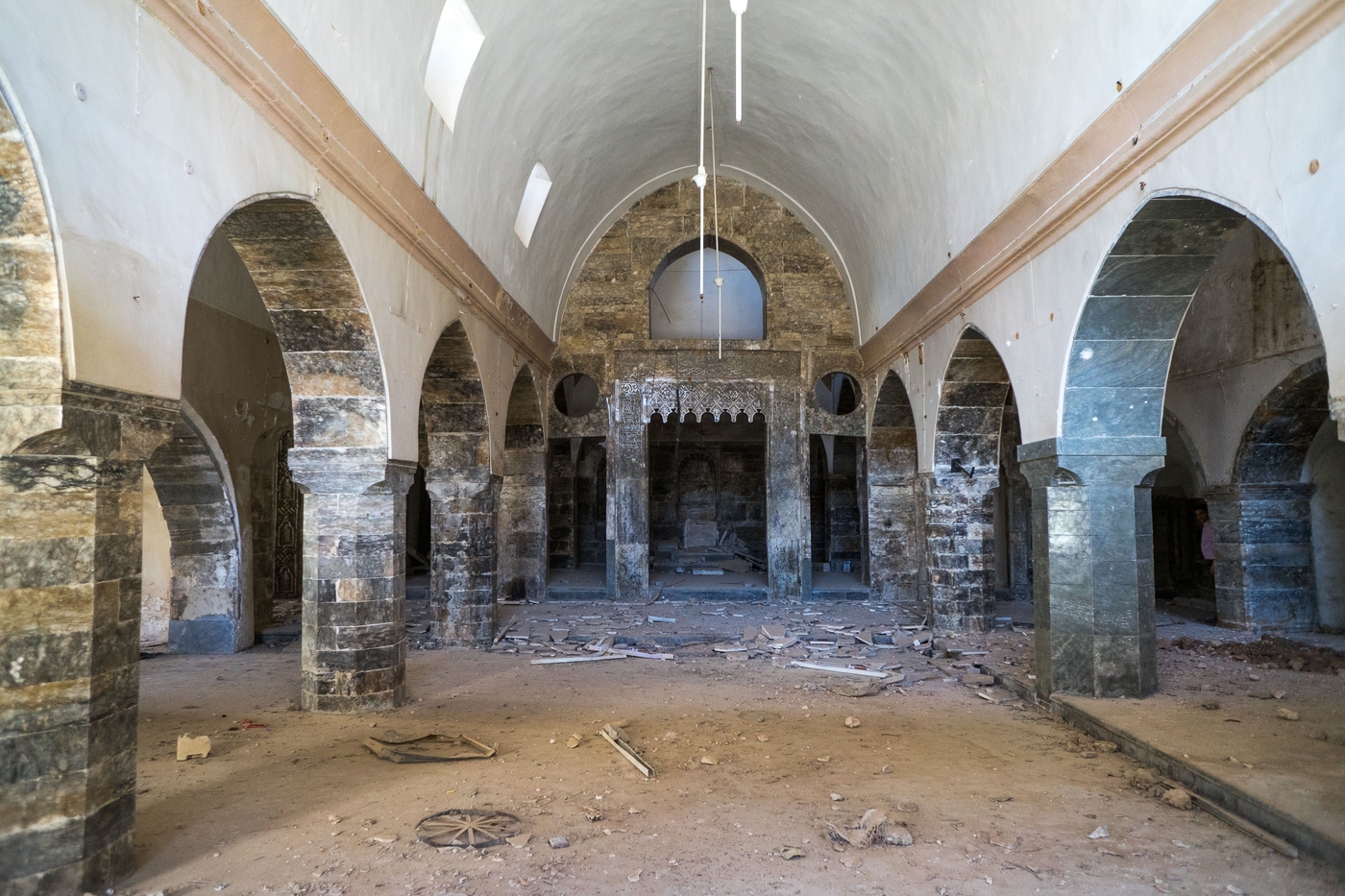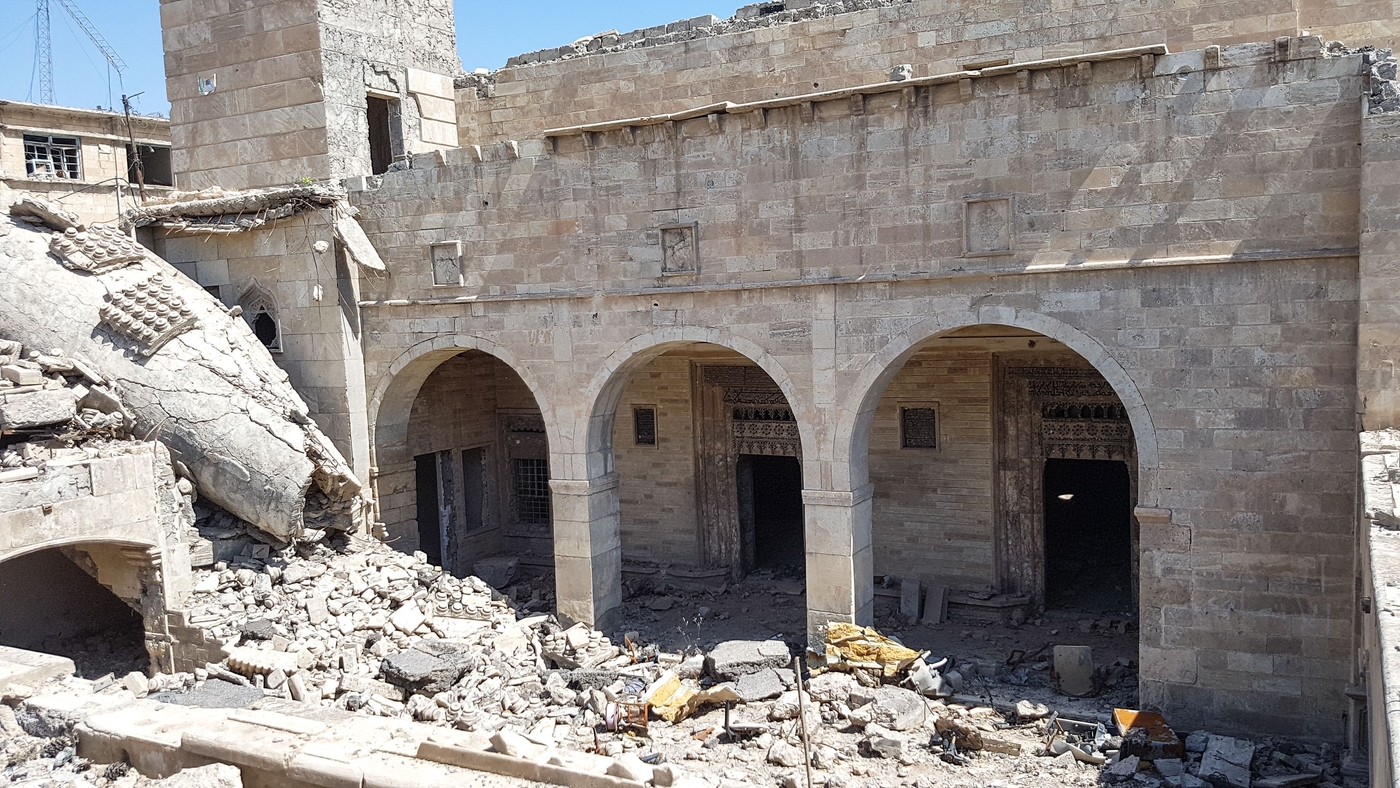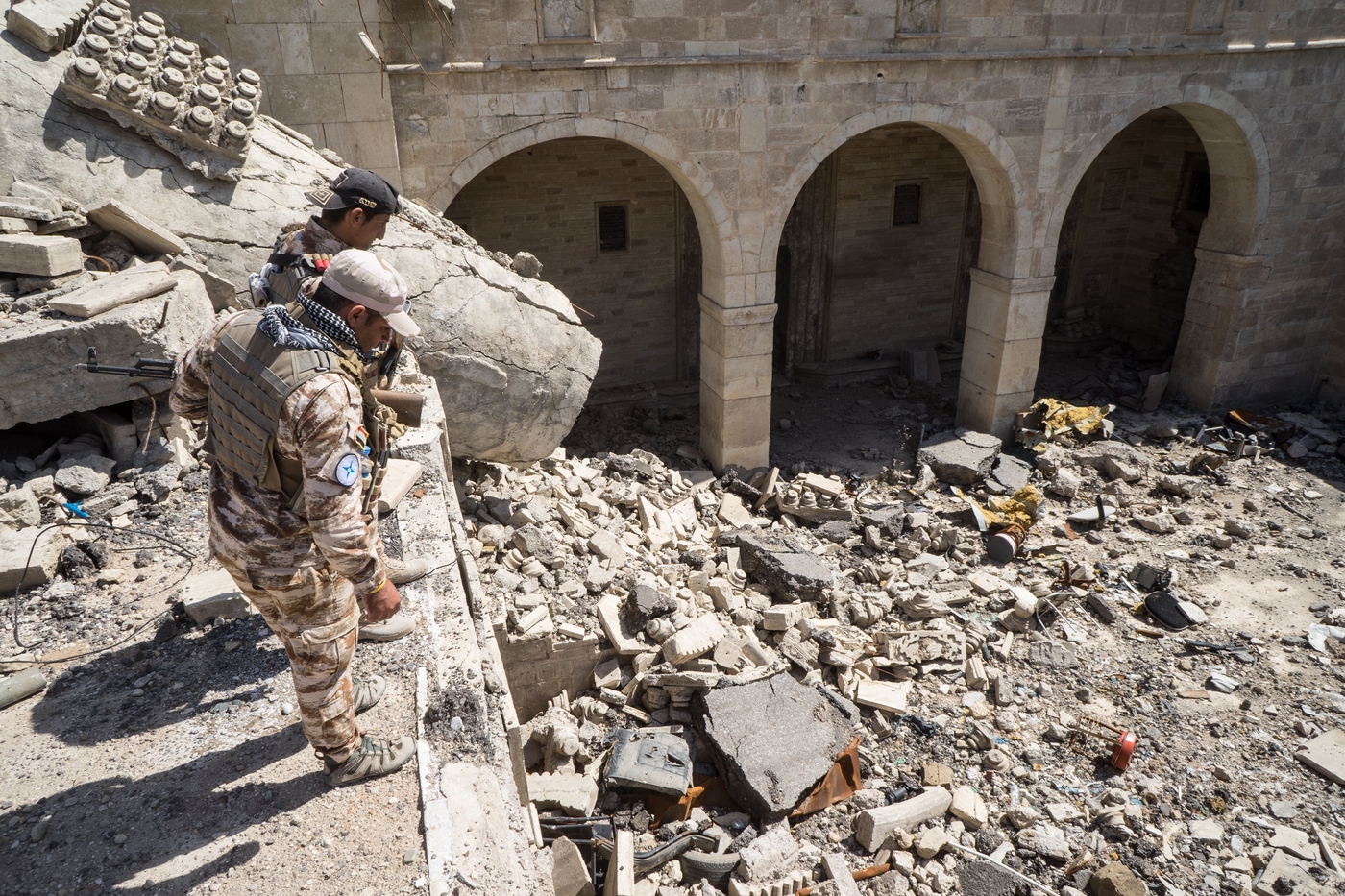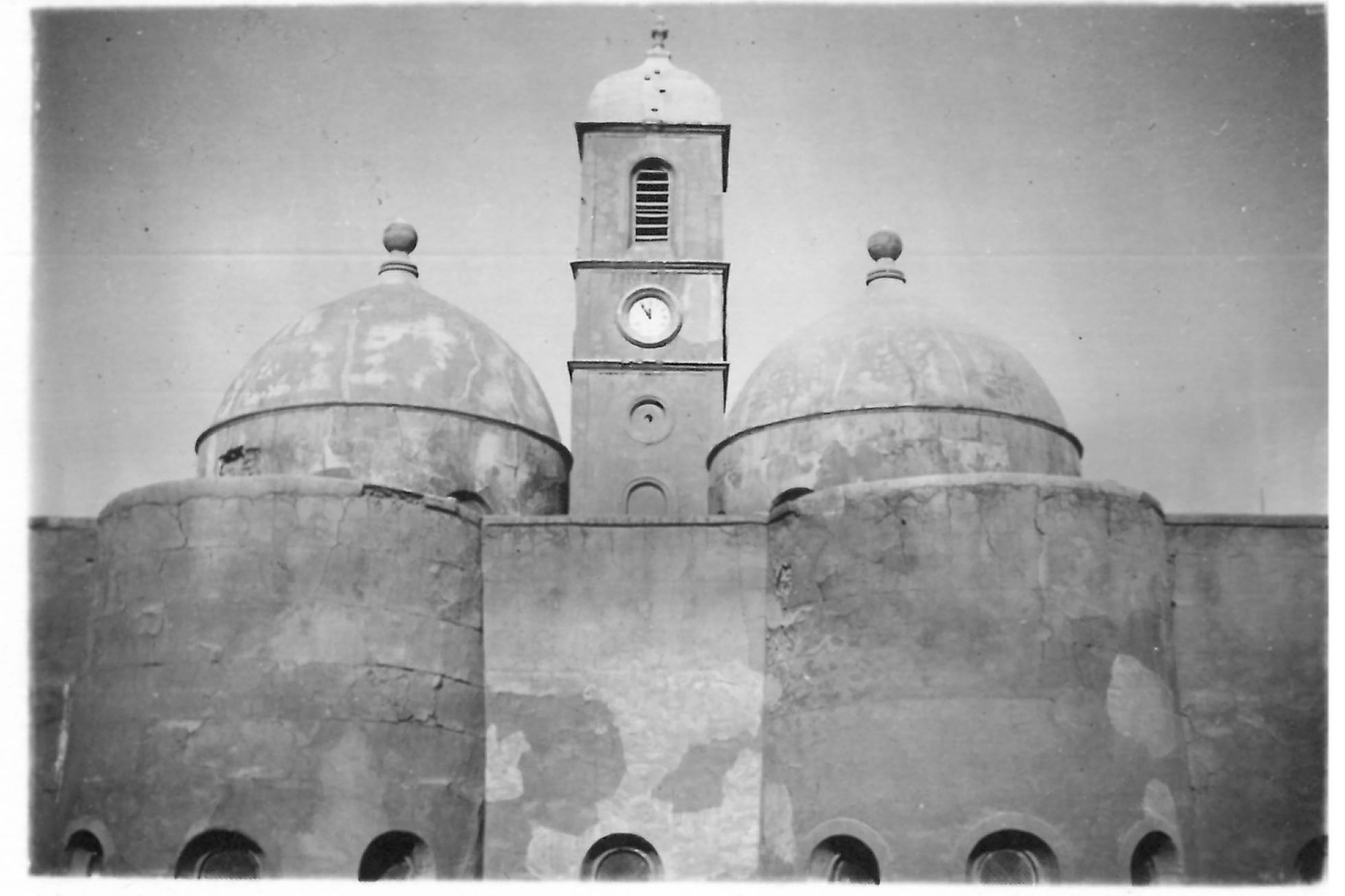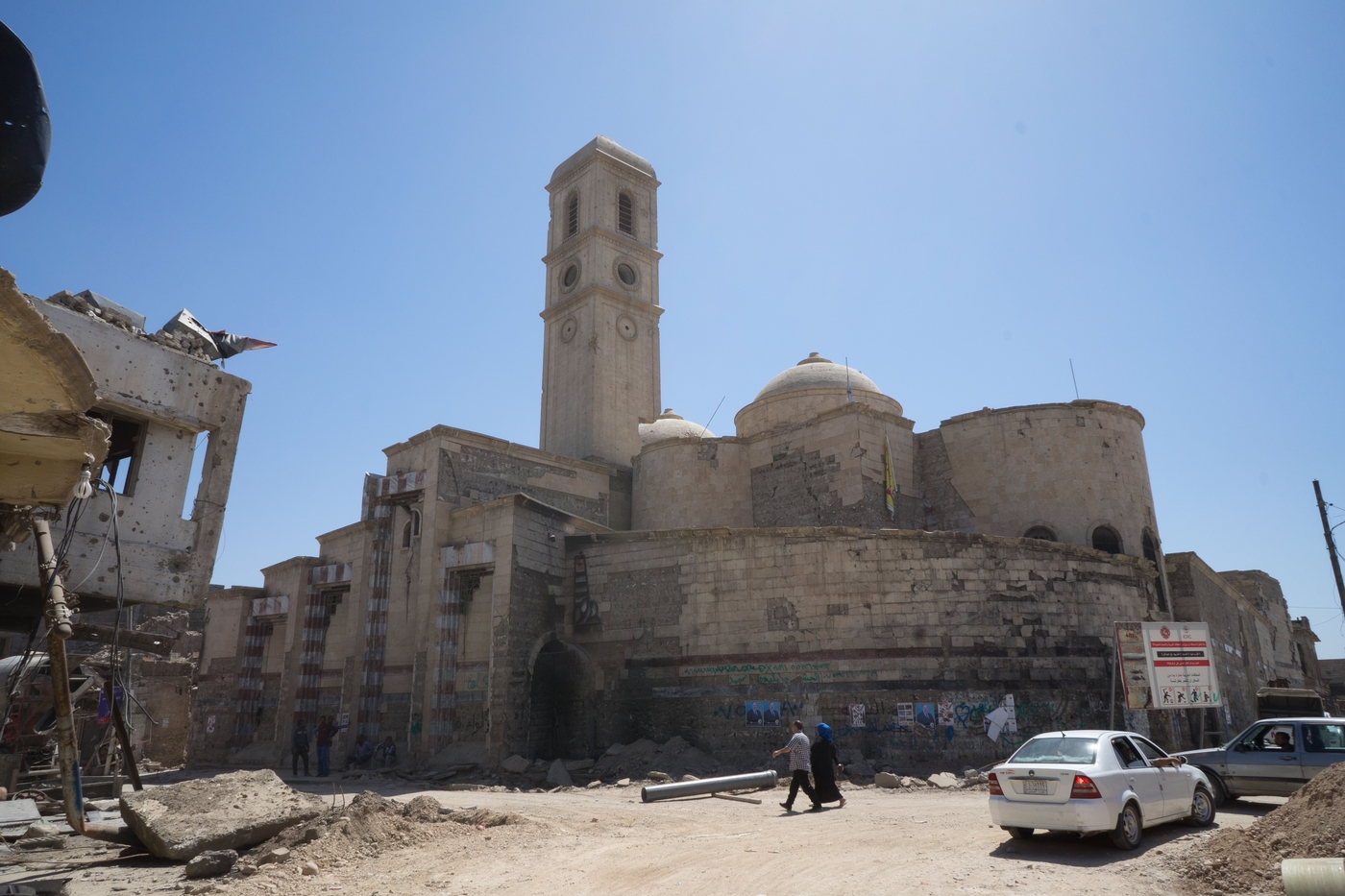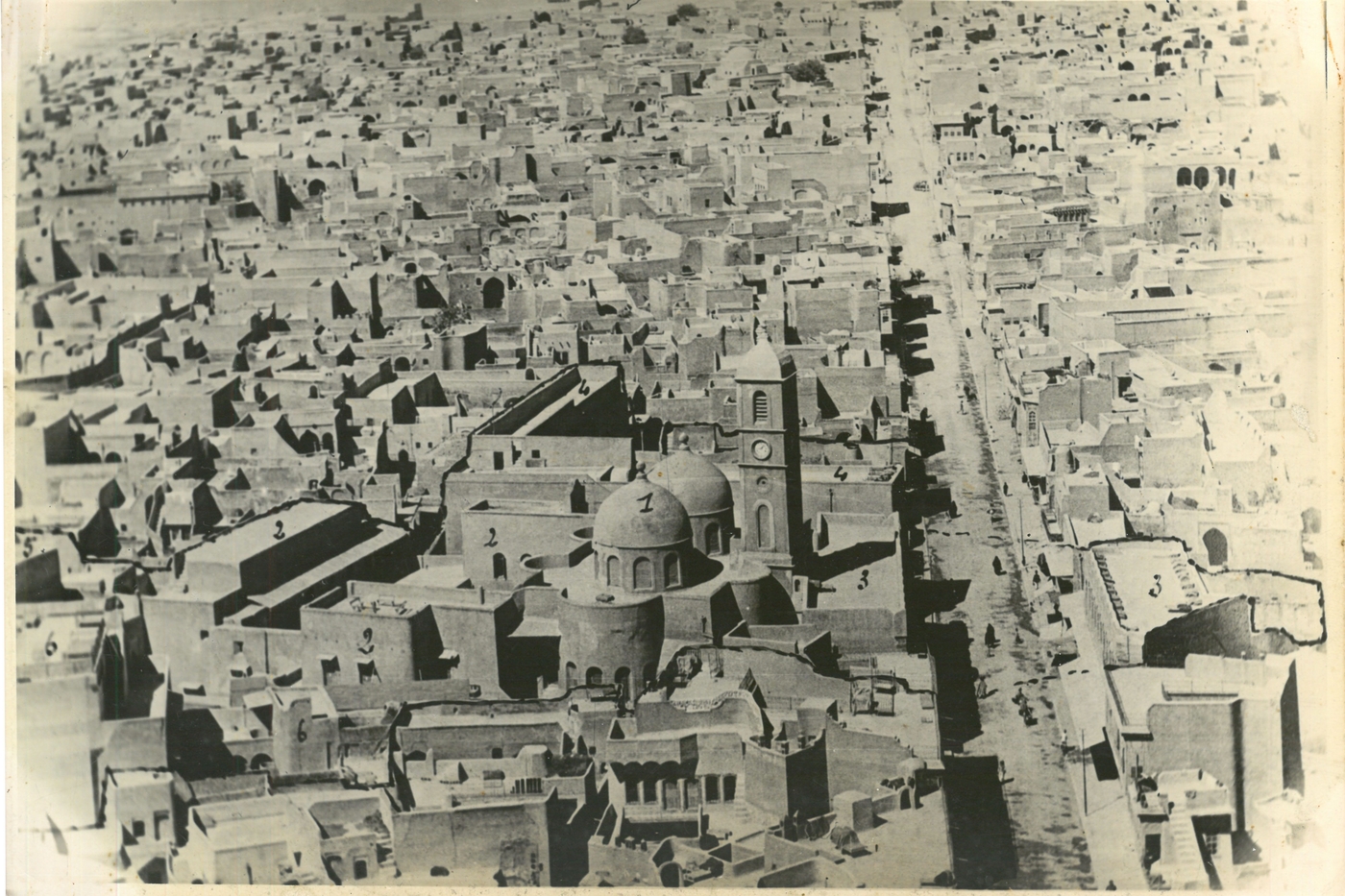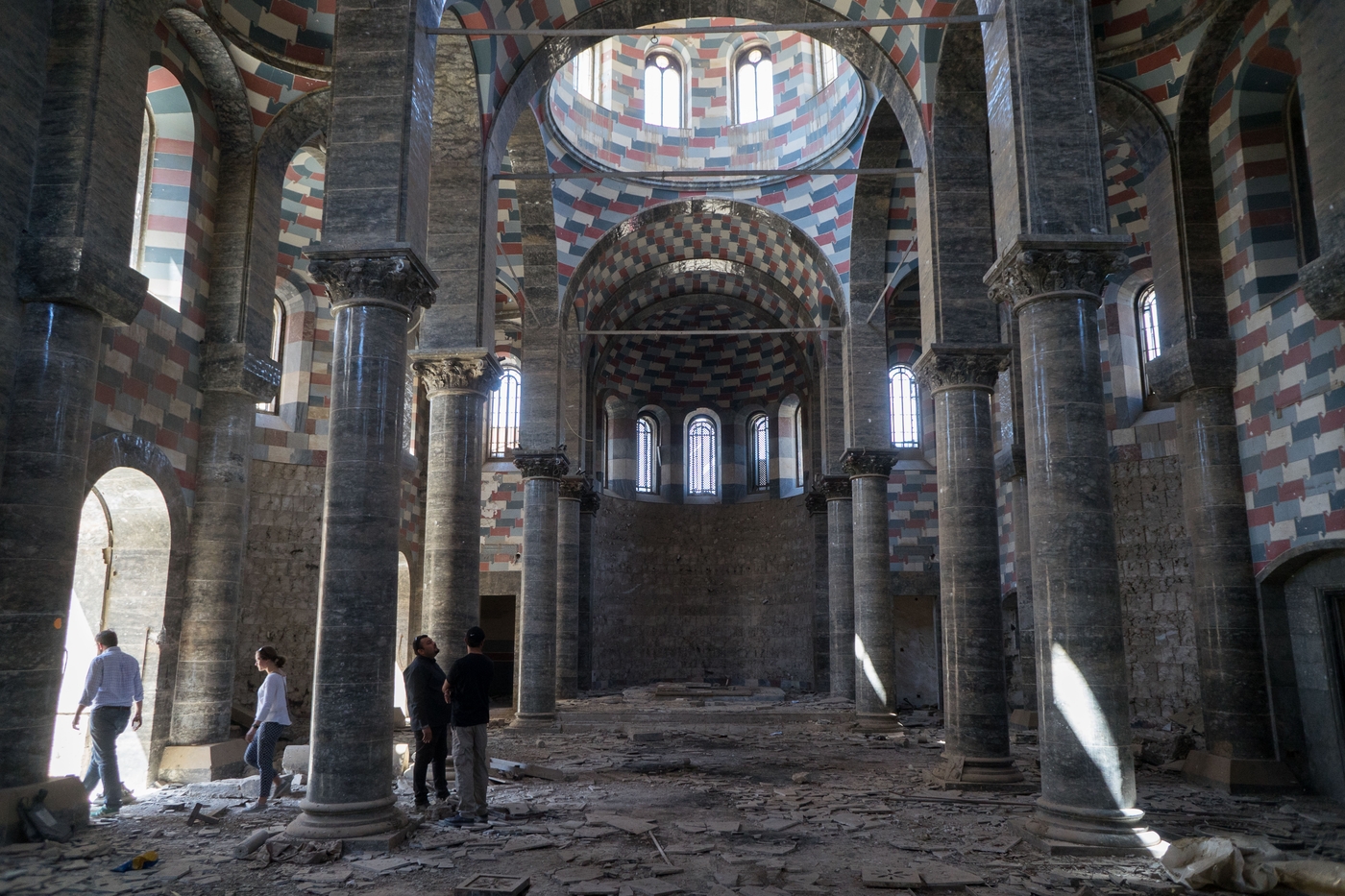Christian buildings in Mosul
The Jerusalem of Mesopotamia, the centre of the old town of Mosul has been turned into a rubble graveyard. Mosul was once home to some of the most important Christian buildings in Iraq. They were vandalised, bombed and, in some cases, destroyed in the conflict between 2014 and 2017.

According to the Palaeo-Christian tradition, three churches in Mosul claim to have been built on the site of houses in which the apostles Peter, Bartholomew and Thomas are said to have stayed.
After the Muslim conquest of Mosul in 641, Christians became dhimmis, with the limited rights and heavy responsibilities assigned to their denomination. In 1743, they played an active role in defending the city against the Persian Nâdir Shâh and, as a result, were able to build new churches in the city. The 17th century saw the opening of Latin Catholic missions in Mesopotamia. Capuchin monks arrived in Mosul in 1636. Dominicans from the Province of Rome appeared in 1750, followed by Dominicans from the Province of France in 1859. In 1915-1917, Mosul was the scene of a bloody genocide of the Armenians and the Chaldo-Assyrians of the Ottoman Empire. Following the fall of Saddam Hussein in 2003, anti-Christian persecution led to an exodus of Christians from Mosul, prior to the destruction of their heritage during the Battle of Mosul in 2017.
The Syriac-Orthodox church of Mar Touma
The Syriac Orthodox Saint Thomas (or 'Mar Toma') Church in Mosul is traditionally said to have been build on the site of the house in which the Apostle Thomas was given shelter on his way to India. The church is known to have existed as early as the 8th century. It was built in successive stages until the 19th century. Some of its architecture is characteristic of the Atabeg period in the 13th century. Part of the church was built in 1744 during the Ottoman Jalili period, a year after the defeat of the Persian Nadir Shah who failed to take the city.
The church is entered through doors in the north and west fronts. More than a church, it is an architectural ensemble with five naves composed of two parallel churches separated by arches with octagonal columns. The sanctuary runs without interruption from north to south. The level of the church, once much lower, was raised during the construction of the parallel churches, which is why the octagonal pillars of the old church are almost buried.
The north side of the church is the oldest part. The relics of Mar Theodore once kept here were taken to a safe place and escaped destruction at the hands of Daesh.
Besides its history, the church is interesting for its magnificent royal door in Mosul marble, the farsh, with its sculptured low-relief frame depicting the twelve apostles surrounding the Christ figure. Terrorists attacked this frieze with its wealth of interlaced motifs and Asian figures with hammers. All of the faces have been chiselled away.
The Chaldean Al-Tāhirā church
Any visitor looking for the Chaldean Church of Al-Tahira, dedicated to the Virgin Mary, should be aware that there are six churches of the same name in Mosul, each belonging to a different denomination.
The Chaldean Al-Tāhirā church, known as Tāhirā "below", or Al-Tahtaniyya, was rebuilt in 1744, a year after the siege of Mosul by the troops of the Persian Nâdir Shâh, on the site of a former convent, Mar Gabriel (Saint Gabriel), the seat of a celebrated school of theology as early as the 7th century. The monastery closed in the middle of the 13th century.The Chaldean Al-Tāhirā church is impressive. It is :
A rare example of unity of style and period; it is quite simply an 18th century masterpiece (...) The harmony of this church is due to its great unity and extreme elegance. This church could be described as one of the most beautiful in the Orient
Source Jean-Marie Mérigoux, o.p.
The destruction and looting carried out between 2014 and 2017 by Daesh and heavy bombing during the Battle of Mosul in June and July 2017 damaged the walls, roof and belltower of the church. The interior of the building escaped relatively unscathed.
Al-Tāhirā was also the Episcopal see of the Chaldean archbishop of Mosul until the assassination of its archbishop, Paulos Faraj Rahho, in March 2008. The Chaldean archbishopric was then transferred to the Cathedral of Mar Yousif, Ankawa, in the Kurdistan Region of Iraq. Since 22 December 2018, Najeeb Michaeel has been the new Chaldean archbishop of Mosul.
The Church of the Dominican Convent (Our Lady of the Hour)
The Church of the Dominican Convent (Our Lady of the Hour), popularly known as the Latin Church, in Mosul, is in the southern sector of Old Mosul where the Nineveh and Al-Shaziani/Farouq roads meet.
Since 1750, the religious members of the Dominican Mission of Mesopotamia, Kurdistan and Armenia have been actors, experts and key witnesses of Iraqi Christian history and the threats faced by Christians in the Near East.
The first Dominican church in Mosul was built by Italians. Between 1866 and 1873, a new large Latin church was built by the Dominicans of the Province of France on the same site. An imposing building, both solid and slender, in the Roman-Byzantine style, it has three naves and five transepts.
The Dominicans set up Iraq’s first lithographic printing press here in 1857, and then in 1860, a modern printing work, producing a number of books in Arabic, French and Syriac, including the first Bible in Iraqi Arabic, the Peshitta (the Bible in Syriac), and the New Testament in Western Syriac. This remarkable printing works was destroyed by the Ottoman Turks in 1915 during the First World War.
The celebrated belltower of Our Lady of the Hour stands to the north, between two apse chapels. The Empress Eugenie of Montijo, wife of Napoleon III, provided the money for the belltower, the first in Iraq, in 1880, and it was fitted with the celebrated four-faced clock in 1881. People could tell the time no matter where they were in the city.
Our Lady of the Hour, popularly known as the Latin Church, is part of a monastery complex restored in the 2000s and then looted and damaged during the three-year occupation of Mosul by Daesh between 2014 and 2017. Even the clock faces and mechanism were stolen.
Maimed but still standing, the Church of the Dominican Convent (Our Lady of the Hour), popularly known as the Latin Church in Mosul has become a beacon of pain in an ocean of distress.


